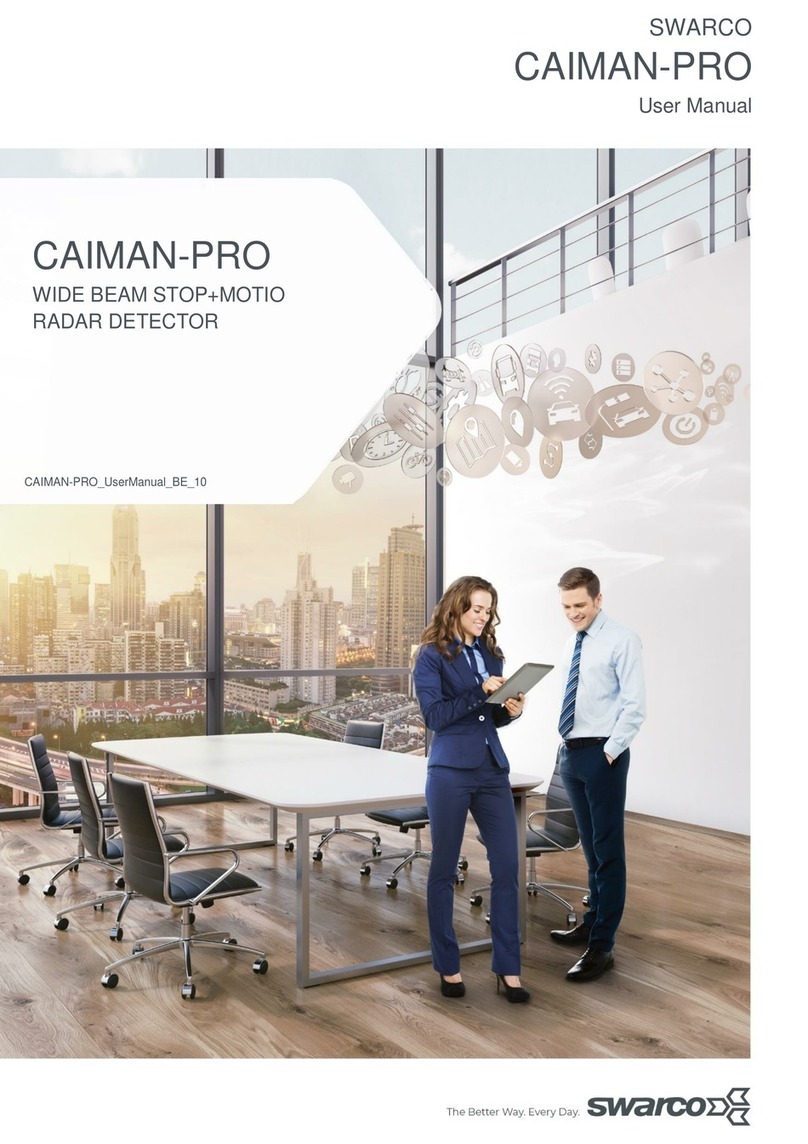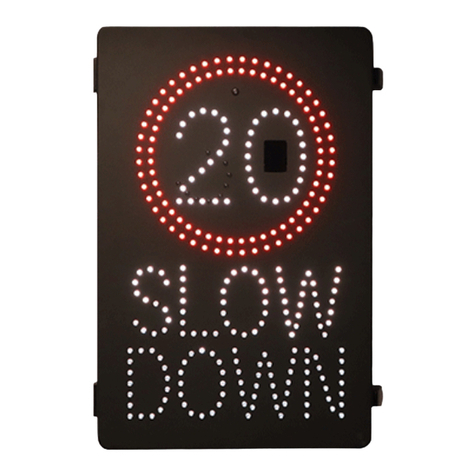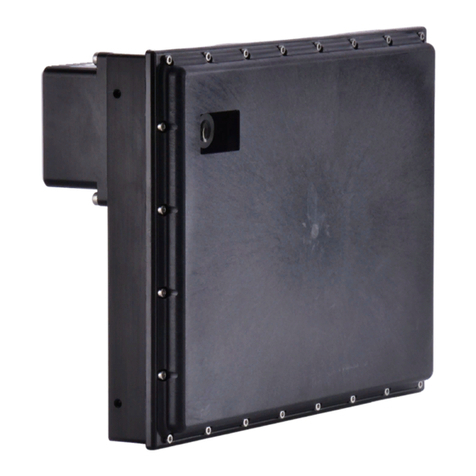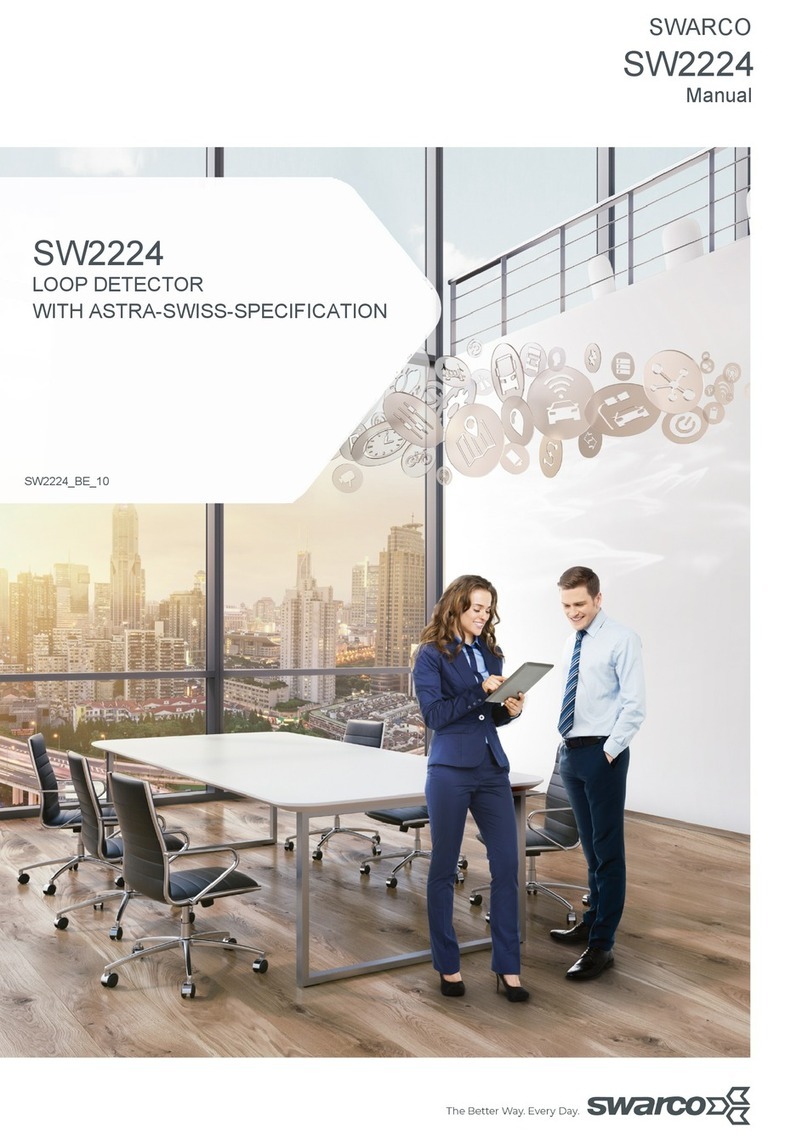1 © 2010 All rights reserved IG315_2_BE_20
SWARCO TRAFFIC SYSTEMS GMBH
IG315/2
User manual
Subject to technical modifications.
www.swarco.com/sts
1 Introduction
On the following pages you will learn how to install and
operate the device in an appropriate way. We attach great
importance to the safe, appropriate and effective handling
of this device. It is therefore important to read this manual
thoroughly before using the device.
2
In the manual you will find important instructions helping
you to avoid danger and to prolong the reliability and du-
rability of the device and the accessories.
For your own safety you should read the safety instruc-
tions. Follow the instructions closely in order to avoid dan-
ger for yourself and others or damage to the device.
If you have any questions about the IG315/2, which are
not answered in this manual, or if you have problems un-
derstanding the descriptions, please contact:
SWARCO TRAFFIC SYSTEMS GMBH
Business Unit Detection
Niederkircher Straße 16
D-54294 Trier
1.1 Usage according to regulations
The IG315/2 is solely suited for the detection of vehicles.
Any further usage is not appropriate. Do not use the
IG315/2 for any other purpose.
1.2 Label
The IG315/2 is provided with a quality label / serial num-
ber. You will need these indications when talking with the
customer service, e.g. ordering accessories or spare
parts.
3
Note here the serial number and name of the device in or-
der to have them available when needed:
Serial number:
________________________________________
Voltage version:
________________________________________
CE-label:
1.3 Further documentation
Notes on loop installation
1.4 Symbols
In several places throughout this manual you will find the
following symbols stating important safety instructions:
ATTENTION!
This symbol indicates dangers which might cause damage
to people or property.
Note
This symbol indicates information for installation and
function of the device.
1.5 Safety instructions
Read the following safety instructions thoroughly and ob-
serve them carefully. They are stated to ensure your own
safety and the safety of others and to avoid damage to the
device or accessories.
4
ATTENTION!
Danger of electricity! Make sure that no liquid may get
inside the device. If this happens, interrupt the power
supply to the device at once.
If you notice any damage, e.g. broken or crushed cables,
damaged plugs, enclosures etc., turn off the device at
once, interrupt the power supply and make sure that the
device cannot accidentally be turned on again.
The device may only be installed, brought into service and
repaired by an electro-technical expert. Inappropriate
operation, improper maintenance or not observing the
instructions in this manual can lead to danger.
Any malfunction of the device which may limit the safety
of its users or others must be removed immediately. All
warning and safety labels on the device must be observed
and kept complete and legible.
The appropriate usage must be observed by all means.
For damage resulting from inappropriate usage the manu-
facturer will not undertake any liability.
The device must not be used as a safety component in the
sense of the European Directive 98/37/EC ("Machinery Di-
rective”). In systems with high risk additional safety meas-
ures are necessary.
5
The operator of the device must ensure that the chosen
means of operation will not cause damage to material or
danger to people and that all security and safety installa-
tions are present and functioning.
Before installation and first operation, please observe the
instructions in the manual.
The manual must be available at the site of usage at any
time. It must be read thoroughly and applied appropriately
by the person responsible for the operation, maintenance
and service of the device.
Note
Our products are in a constant process of improvement
and advancement. Because of this, read the current man-
ual thoroughly before installation and first operation.
Without prior consent of the manufacturer, no modifica-
tions, neither mechanical nor electrical, may be done.
Only parts that have the consent of the manufacturer may
be used for backfitting or as accessories. Any violations
will lead to the termination of conformity and the manu-
facturer’s warranty. The user will subsequently bear the
risk (the Declaration of Conformity is available at
www.swarco.com/sts).
6
2 Product description
2.1 Features
The induction impulse transmitters IG315/2 evaluate the
loops in the ground. Those depict the inductivity of a high-
frequency oscillator circuit. If a vehicle crosses the loop,
its metal components cause a change of frequency in the
oscillator circuit. These are analysed by the loop detector,
transmitted as switching signals via floating relay contacts
and displayed on the front LEDs. The analysis of the loop
frequency is done via a micro-processor system which
aligns automatically to the according loop and compen-
sates changes of the loop inductivity caused by tempera-
ture, humidity or aging of components. The induction im-
pulse transmitter IG315/2 is a 1-channel unit, which
means that this device can connect to and evaluate one
induction loop.
2.2 Switching outputs
The switching output is coupled with the LED display (A)
on the front panel (see 4). There are two switching outputs
available. Relay A is switched as static signal or impulse
for the mode “loop occupied”. Relay B emits an additional
impulse or can be activated as switching output for the fail-
ure report (ERROR) via the operating units on the front. All
switching outputs are equipped with electro-mechanical
relays.
7
2.3 Parameter adjustment
Via the DIP-switches on the front the following parameters
can be adjusted:
sensitivity
hold time
frequency of the measuring system
switch-off delay
B-relay as fault report, (instead impulse relay)
impulse when leaving the loop
switch-on delay
automatic alignment
detection by fault
2.4 Technical data
Technical data
IG315/2 S.T. /
IG315/2 W.T. /
IG315/2 ST.T.
IG315/2 S.V. /
IG315/2 W.V. /
IG315/2 ST.V.
Power supply 230 V AC: (-10 - +6) % / 4,5 VA
(50 Hz: +/-0,5 %)
resp. 24 V AC/DC: +/-10 % / 3 VA
Operating temperature -25C to +70C
Storage temperature -40C to +80C
Safety IP30
Enclosure (plastic) l = 75 mm, w = 37 mm, h = 68 mm
Connection via 11-pin connector (type 78-S 11);
dimension of socket manufacturer-dependent
Weight 240 g
Inductivity range 15 µH to 2000 µH (see also 6.1),
recommended range:
100 µH to 300 µH at max. 30
8
Technical data
IG315/2 S.T. /
IG315/2 W.T. /
IG315/2 ST.T.
IG315/2 S.V. /
IG315/2 W.V. /
IG315/2 ST.V.
Sensitivity
adjustable
per channel
7 levels adjustable
from High 0.01 to
Low 0.9
per channel adjust-
able in 4 levels from
High 0.01 to Low 0.9
(adjustment of frequency in %)
Hold time impulse mode 100
ms (optional 1 s)
and static hold time
per channel in
4 levels adjustable:
0.1 s; 4.5 min; 2 h;
























